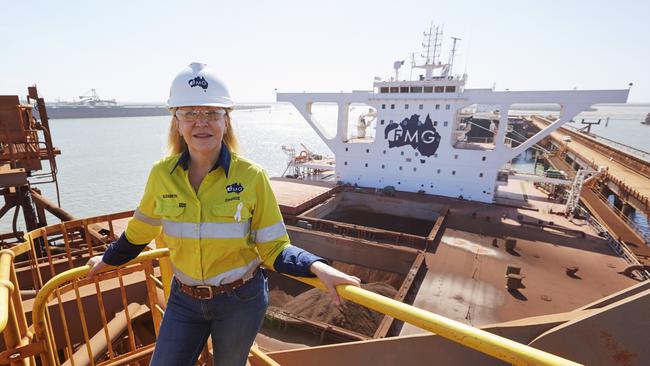Budget 2019: Iron ore price surge fills Treasury’s coffers
Strong iron ore prices are helping to dig the federal budget out of a hole.

Strong iron ore prices are helping to dig the federal budget out of a hole.
The price of Australia’s most valuable export has vastly outperformed Treasury’s expectations, delivering a multibillion-dollar boost to taxpayers and giving federal treasurer Josh Frydenberg extra firepower to play with ahead of the upcoming election.
Iron ore prices were already trading higher than budget forecasts before January’s tragic Brumadinho tailings dam disaster in Brazil, which prompted the country to suspend operations across a host of its iron ore mines.
The move has knocked out around 90 million tonnes of annual iron ore supply and has driven iron ore prices materially higher. Iron ore has climbed from around $US55 a tonne in July to almost $US90 in February, and analysts expect prices to reach as high as $US100 a tonne over the rest of this year.
Treasury had expected iron ore to average $US55 a tonne excluding freight costs, which add roughly $US6 a tonne, a level to which it now expects the price to return by the end of March next year.
The Australian dollar has also fallen below Treasury’s forecasts for the year, delivering an extra kicker on revenues from exports such as iron ore.
Treasury has slashed its forecast of personal tax receipts by $15bn over the next four years, even before policy decisions are taken into account, due to weaknesses in household consumption, the housing market and stagnant wages.
“In the near term, however, this impact will be more than offset by an increase in company tax collections in 2018-19 and 2019-20, reflecting the recent observed strength in commodity prices,” it said.
The Pilbara’s three iron ore heavyweights — Rio Tinto, BHP and Fortescue Metals Group — all reported bumper profit results in February, and the trajectory of iron ore prices suggest that profits could get even better in the next few months.
Fortescue chief executive Elizabeth Gaines noted that several analysts had upgraded their profit outlook for the company on the back of stronger iron ore prices and current market conditions in China, where steel mills are increasingly attracted to cheaper, lower-grade ores from Australia.
“There’s no doubt at the moment that with the iron ore price where it is, and with what we’ve seen in the markets in the context of the appetite for Fortescue’s iron ore, it’s clear we are operating in a period where there will be strong profit margins,” Ms Gaines told The Australian.
“With strong profit margins come higher taxes.”
The resources sector has led a surge in federal government revenues. Company taxes are expected to raise almost $100bn this year, up from $84bn last year and just $68bn the year before.
The price gap between lower-grade Australian ores and higher grade material from Brazil has narrowed significantly, while stockpiles of Australian ore at Chinese ports have shrunk.
Ms Gaines said market conditions in the iron ore sector remained strong, even without the disruptions from Brazil.
“We’ve seen the Chinese government recently announce further investment in infrastructure, and infrastructure obviously drives demand for steel which drives demand for iron ore,” she said.
The iron ore industry is also witnessing its largest round of investment in mines since the peak of the last boom. BHP, Rio Tinto and Fortescue all have new multibillion-dollar mines under construction as they look to replace older Pilbara operations.
The wave of construction is also generating thousands of new jobs in the Pilbara.

